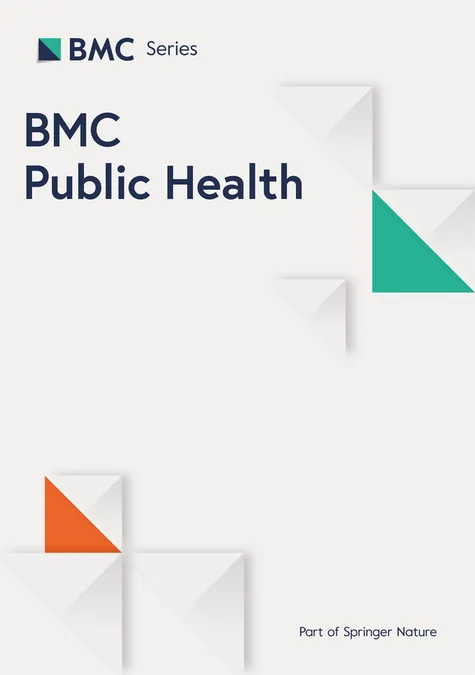
Increasing HIV Self-Testing Among Rwandan University Students: Challenges and Solutions Revealed
2025-03-28
Author: Arjun
In an urgent call to address the rising HIV rates among young people, a recent study in Rwanda examined the rates of awareness, barriers, and opportunities for HIV self-testing among university students.
Conducted across six major universities, the study utilized a mixed-methods approach, collecting both quantitative and qualitative data to provide a comprehensive view of the challenges and perceptions surrounding HIV self-testing.
Study Background and Methodology
The study targeted university students across several regions of Rwanda, including Kigali City and the provinces of East, West, North, and South, where HIV prevalence rates vary.
The research included 424 participants with a majority being female and primarily aged between 21 and 24. Alarmingly, nearly two-thirds of the students had never heard of HIV self-testing, despite 37.7% being sexually active.
Using a robust methodological design, researchers employed convenience sampling to select participants who met the criteria for both quantitative surveys and qualitative interviews.
The data collection spanned just one week and involved student leaders to amplify awareness about the study. Ultimately, the concurrent analysis shed light on not just the numbers but also the lived experiences and perceptions surrounding HIV self-testing.
Findings: Awareness and Usage Rates
The findings reveal a startling gap in awareness; approximately 64.7% of students reported having no prior knowledge of HIV self-testing, and only 28.7% had undertaken a self-test for HIV.
Notably, female students demonstrated higher rates of testing within the last 12 months compared to their male counterparts.
Moreover, students from the Eastern province showed greater awareness and uptake of HIV self-testing services, which suggests regional differences in health education and accessibility.
Barriers to HIV Self-Testing
Students articulated various barriers preventing them from accessing and using HIV self-testing kits.
The high cost (around RWF 5000) emerged as a primary concern, particularly for students with tight budgets.
Additionally, lack of information about the availability of these testing kits and fears surrounding the accuracy of results were significant deterrents.
Concerns were also raised about the absence of post-test counseling, which many believed would be crucial in managing positive results and providing emotional support.
Perceived Vulnerabilities and the Need for Action
Respondents highlighted their perceived vulnerability to HIV due to factors such as risky sexual behaviors and lack of awareness about safer practices.
Many students expressed deep concern over the stigma attached to HIV, noting how it can hinder discussions about safe sex practices and testing.
Participants cited unhealthy sexual relationships, pressure from peers, and a culture of silence surrounding sexual health as contributing factors to their susceptibility.
Opportunities for Improvement
Despite the challenges, the research also uncovered opportunities to increase HIV self-testing uptake.
Many students recognized the advantages of private and easy self-testing, viewing it as a means to take control of their health.
Suggestions to improve accessibility included making self-testing kits available in pharmacies close to university campuses and lowering the costs associated with testing.
Conclusion: A Call to Action
The findings of this study present a critical need for targeted interventions to enhance HIV self-testing awareness and accessibility among university students in Rwanda.
Education campaigns should focus on destigmatizing HIV testing, ensuring students are better informed about both risks and resources.
Authorities must also consider subsidizing the cost of self-testing kits to make them more accessible.
As universities continue to be hotbeds for HIV transmission among youth, prompt action can play a vital role in reducing infection rates and safeguarding the health of future generations.


 Brasil (PT)
Brasil (PT)
 Canada (EN)
Canada (EN)
 Chile (ES)
Chile (ES)
 Česko (CS)
Česko (CS)
 대한민국 (KO)
대한민국 (KO)
 España (ES)
España (ES)
 France (FR)
France (FR)
 Hong Kong (EN)
Hong Kong (EN)
 Italia (IT)
Italia (IT)
 日本 (JA)
日本 (JA)
 Magyarország (HU)
Magyarország (HU)
 Norge (NO)
Norge (NO)
 Polska (PL)
Polska (PL)
 Schweiz (DE)
Schweiz (DE)
 Singapore (EN)
Singapore (EN)
 Sverige (SV)
Sverige (SV)
 Suomi (FI)
Suomi (FI)
 Türkiye (TR)
Türkiye (TR)
 الإمارات العربية المتحدة (AR)
الإمارات العربية المتحدة (AR)